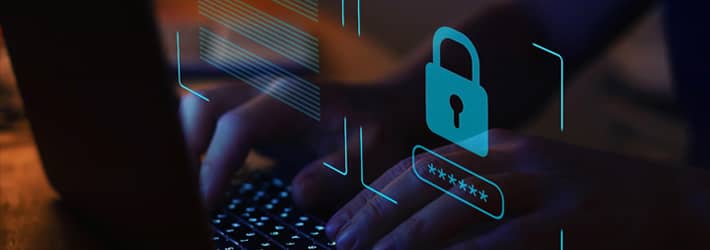Last Updated on January 13, 2025 by Deepanshu Sharma

In today’s digital world, terms like data privacy and data security are heard increasingly more often. Although these two terms are closely related, they are not the same thing. It is crucially important that company’s understand the difference between them in order to avoid falling out of compliance with the relevant data protection/privacy laws.
What is Data Privacy?
Data privacy refers to the control and protection of personal and sensitive information that individuals share in various contexts. It encompasses the management of how data is collected, stored, processed, and shared to ensure that individuals’ personal information remains confidential and secure. Data privacy safeguards individuals from unauthorized access, misuse, and exploitation of their data, aiming to maintain their autonomy and protect their rights.
Organizations that collect data, such as businesses, government agencies, and online platforms, have a responsibility to handle this information ethically and transparently. This involves obtaining informed consent from individuals before collecting their data and ensuring that the data is used only for the intended purpose. Data privacy also involves implementing robust security measures to prevent data breaches, leaks, or hacks that could compromise individuals’ personal information.
Legal frameworks, like the General Data Protection Regulation (GDPR) and the California Consumer Privacy Act (CCPA), outline rules and guidelines for data privacy, holding organizations accountable for their data handling practices. These regulations grant individuals the right to access their data, request its deletion, and have greater control over how their information is used.
In a digital age where vast amounts of personal data are exchanged daily, data privacy is a critical aspect of maintaining individuals’ trust and protecting their fundamental rights in an increasingly interconnected world.
What is Data Security?
Data security involves the measures and practices implemented to protect digital information from unauthorized access, breaches, and threats. It encompasses strategies, technologies, and protocols designed to ensure the confidentiality, integrity, and availability of data throughout its lifecycle.
Confidentiality ensures that data is accessible only to authorized individuals or entities. This is achieved through encryption, access controls, and authentication mechanisms, preventing unauthorized users from viewing sensitive information.
Integrity guarantees the accuracy and reliability of data. Data should not be altered, tampered with, or corrupted without proper authorization. Techniques such as checksums and digital signatures help maintain data integrity.
Availability ensures that data is accessible and usable when needed. This involves implementing redundancy, backup systems, and disaster recovery plans to mitigate downtime caused by hardware failures, cyberattacks, or other disruptions.
Data security also involves measures to defend against various threats, including cyberattacks like malware, ransomware, and phishing, as well as physical threats like theft or damage to hardware.
Organizations adopt a multi-layered approach to data security, combining firewalls, intrusion detection systems, antivirus software, and regular security audits to identify vulnerabilities and mitigate risks.
Legal and industry-specific regulations often guide data security practices, such as the Health Insurance Portability and Accountability Act (HIPAA) for healthcare data and the Payment Card Industry Data Security Standard (PCI DSS) for credit card information.
In an era of increasing cyber threats, data security is paramount to maintaining individuals’ trust, safeguarding intellectual property, and ensuring the continuity of operations for businesses and organizations that rely on digital information.
What’s the Difference Between Data Privacy and Data Security?
As mentioned above, data privacy is focused on how personal or sensitive data is used and shared, while data security is focused on protecting data from unauthorized access and manipulation. To further illustrate the point, imagine that you have collected some personal information, encrypted it, stored it in a secure location and the data is continuously monitored to prevent unauthorized access. In this scenario the data may be considered secure; however, if the data was collected without the proper consent of the data subject, you will have violated their privacy, and may be subject to lawsuits and fines.
Below is a table that summarizes some of the key differences between data privacy and data security:
| Aspect | Data Privacy | Data Security |
|---|---|---|
| Definition | Involves controlling and protecting personal information to ensure its confidentiality and proper usage. | Focuses on safeguarding data from unauthorized access, breaches, and threats. |
| Goal | Protects individuals’ rights and autonomy by regulating data collection, usage, and sharing. | Ensures data confidentiality, integrity, and availability while preventing breaches and unauthorized access. |
| Emphasis | Concerned with how data is handled, collected, used, and shared. | Focuses on preventing unauthorized access, tampering, and unauthorized modifications. |
| Examples of Measures | Obtaining consent, data anonymization, user rights (access, deletion), transparency in data practices. | Encryption, access controls, firewalls, authentication, intrusion detection, backup systems, regular security audits. |
| Legal Frameworks | GDPR, CCPA, HIPAA, etc. | PCI DSS, ISO 27001, NIST Cybersecurity Framework, etc. |
| Scope | Covers personal and sensitive information of individuals. | Encompasses digital and physical security, including technology and processes. |
| Focus | Individual rights, ethical data handling. | Preventing breaches, cyber threats, and ensuring data availability. |
Data Privacy and Data Security vs Compliance
Compliance plays a crucial role in ensuring data privacy and data protection. It refers to adhering to relevant laws, regulations, standards, and guidelines that govern how organizations collect, handle, process, and share data. Compliance helps organizations establish and maintain responsible practices that safeguard individuals’ personal information and prevent data breaches or misuse.
Data Privacy Compliance
Data privacy compliance involves adhering to laws and regulations that protect individuals’ rights regarding the collection, use, and disclosure of their personal information. For instance, the General Data Protection Regulation (GDPR) in the European Union and the California Consumer Privacy Act (CCPA) in the United States establish strict requirements for obtaining consent, providing transparency, granting data access rights to individuals, and notifying authorities in case of data breaches. Organizations operating within these jurisdictions must follow these regulations to avoid legal penalties and maintain the trust of their customers.
Data Security Compliance
Data security compliance pertains to following established standards and best practices to safeguard data from unauthorized access, breaches, and cyber threats. Various frameworks, such as the Payment Card Industry Data Security Standard (PCI DSS), the ISO/IEC 27001 standard, and the NIST Cybersecurity Framework, provide guidelines for implementing robust security measures. Organizations that handle sensitive data, like credit card information or healthcare records, must adhere to these standards to ensure that data remains confidential, integral, and available.
Relationship Between Compliance, Data Privacy, and Data Security
Compliance serves as a bridge between data privacy and data security. While data privacy focuses on the ethical and legal aspects of handling personal information, data security concentrates on protecting data from unauthorized access and breaches. Compliance integrates both by requiring organizations to implement appropriate security measures to uphold data privacy standards. In essence, compliance acts as a practical implementation of data privacy and data security principles. Organizations that comply with relevant regulations not only avoid legal repercussions but also demonstrate their commitment to respecting individuals’ privacy and securing their data. By aligning with compliance requirements, organizations build trust with customers, business partners, and regulatory authorities, fostering a safer and more responsible data ecosystem.
How to Implement Data Privacy and Data Security
Implementing a robust data privacy and data security program can be a challenge, and it’s difficult to know where to start. Organizations must first identify potential risks and then put measures in place to protect their data. This can include developing policies and procedures for data handling, implementing encryption and access control measures, and training employees on data privacy and security best practices. Additionally, organizations should regularly monitor their data privacy and security measures to ensure they are still effective. While a comprehensive guide to maintaining both the privacy and security of your data is beyond the scope of this article, below are some of the most notable steps you should take to safeguard your data and remain compliant with the relevant laws:
Regular Training and Awareness Programs
Educate your employees, contractors, and stakeholders about data security and privacy best practices. Conduct regular training sessions to raise awareness about the importance of safeguarding data and the potential consequences of security breaches. Teach employees to recognize phishing attempts and other social engineering tactics. A well-informed workforce can act as an additional line of defense against security threats.
Leverage Automation for Monitoring and Incident Response
Implement automated monitoring tools that continuously track system activities, network traffic, and data access. These tools can quickly detect suspicious or unauthorized activities, enabling a faster response to potential breaches. Additionally, automate incident response processes to ensure timely reactions to security incidents. Automated responses can help isolate compromised systems, block malicious traffic, and trigger notifications to security teams. Automation not only reduces response times but also minimizes human error, enhancing overall data security and privacy efforts.
Discover and classify sensitive data
A data classification software will scan your repositories for sensitive data, and classify it as it is found. Some solutions will also classify data at the point of creation/modification. Data classification solutions can be very helpful for complying with data protection/privacy regulations as they make it much easier to locate personal data in a timely and efficient manner.
Restrict access to sensitive data
Access to sensitive data must restricted to ensure that users only have access to the data they need to perform their role. In some scenarios you may want to consider implementing role-based access control (RBAC), which is where access rights are assigned to users based on their job roles. As always, use multi-factor authentication (MFA) whenever possible as it is far more secure than the traditional username and password.
Encrypt sensitive data
Encryption is still one of the most effective ways to ensure that sensitive data cannot accessed by unauthorized individuals. The simplest way to encrypt your sensitive data is to use reputable encryption software such as Folder Lock, AxCrypt, VeraCrypt, Secure IT, etc.
Tokenize sensitive data
Tokenization is a data security process that replaces sensitive data with unique, non-sensitive values called “tokens”. Tokenization can help protect sensitive data by making it indecipherable and unreadable. The original data is stored in a secure environment, while the tokenized data is stored and used in other applications or databases. The original data can only be retrieved if the token is matched to the secure data store. Tokenization is a cost-effective form of data security, as it requires no encryption and does not affect the performance of the systems that use it.
Monitor access to sensitive data
A data-centric auditing solution will automatically monitor access to your privileged accounts and sensitive data, and deliver real-time alerts to your inbox or mobile device when suspicious activity is detected. Some auditing solutions come with data classification tools built-in, and some can detect and respond to events that match a pre-defined threshold condition.
Overall, data privacy and data security are two important concepts for organizations to understand. Data privacy governs how personal or sensitive data is used and shared, while data security protects data from unauthorized access and manipulation. Taking steps to implement both data privacy and data security measures can help organizations protect user data and ensure compliance with the relevant regulations.
If you’d like to see how the Lepide Data Security Platform can help to keep your data secure and out of the wrong hands, schedule a demo with one of our engineers.


 Group Policy Examples and Settings for Effective Administration
Group Policy Examples and Settings for Effective Administration 15 Most Common Types of Cyber Attack and How to Prevent Them
15 Most Common Types of Cyber Attack and How to Prevent Them Why AD Account Keeps Getting Locked Out Frequently and How to Resolve It
Why AD Account Keeps Getting Locked Out Frequently and How to Resolve It
